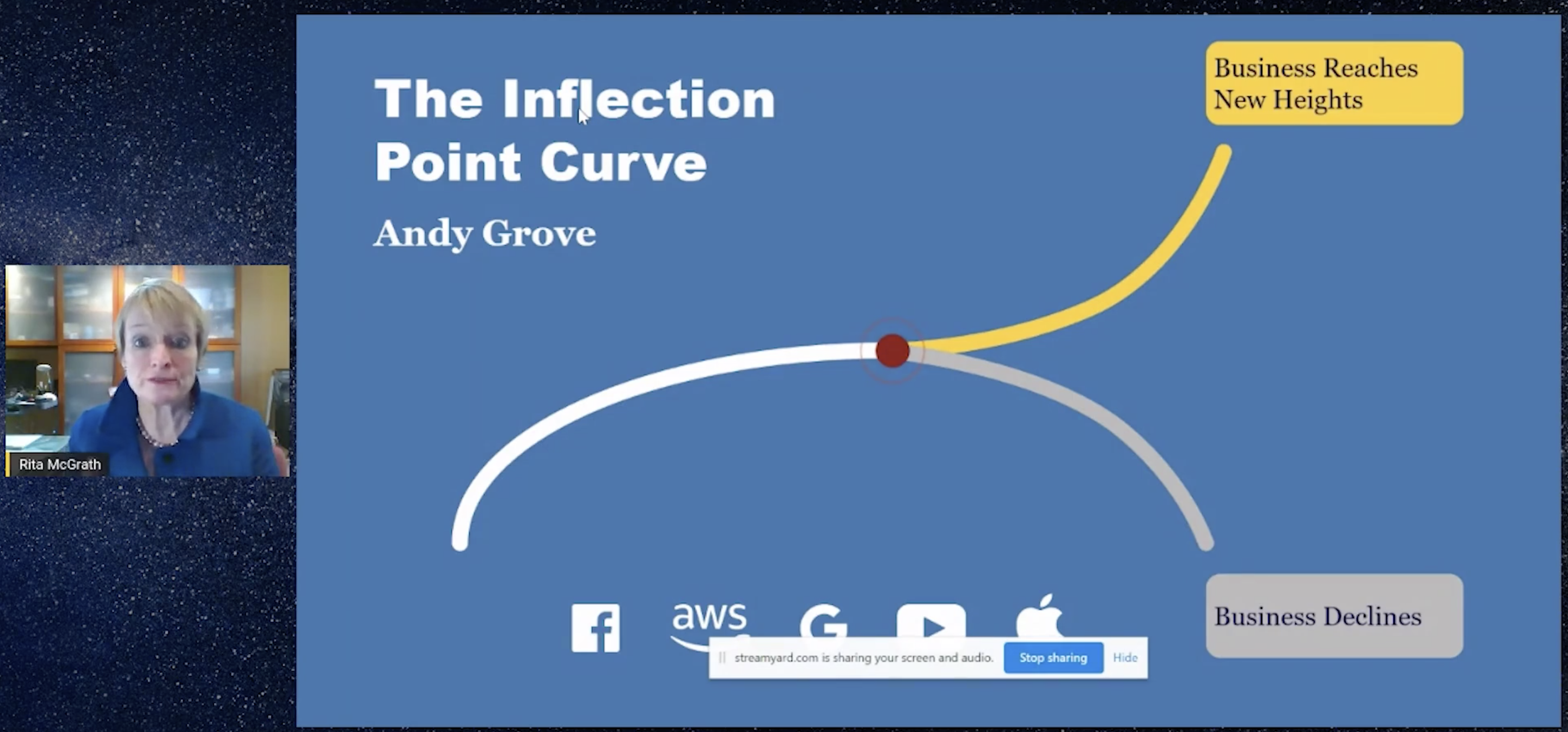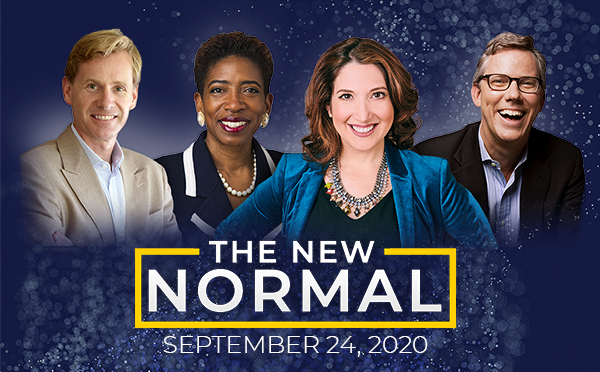In today’s fast-moving environment, scenario planning and early warning scanning are essential strategic tools. So how do you identify them and prepare your strategies for the possible futures?
Together with Nordic Business Forum, we hosted a webinar with Rita McGrath, one of the world’s top experts on business strategy in uncertain environments and an acclaimed Thinkers50 thought leader.
McGrath provided some valuable insights on how to identify early warning signals and prepare your strategies for the possible futures.
Strategic inflection points
McGrath started off by introducing the concept of strategic inflection points. The concept was made popular by Andy Grove, the CEO of Intel, who wrote a book called Only the Paranoid Survive back in the 1990s.
According to Grove, inflection point is something that creates a 10x change in the assumptions underlying your business and that it changes something very fundamental about the way we understand the business to work. It is important to remember that the inflection points do not happen instantly but usually take a while to come about.
For example, McGrath considered that today we are in the midst of probably the greatest inflection point any of us will experience, certainly in our business life, because of the pandemic.
Recognizing inflection points with indicators
According to McGrath the reason why recognizing the strategic inflection points is important, is that if you get the inflection point right, it will take your business to new heights, but if you get it wrong, your business can go into decline.
To recognize the inflection points, McGrath suggested that we should start by asking ourselves what are the indicators and data that we look for when we are trying to figure out what to do when confronted with a very uncertain situation. She explained that there are always three kinds of indicators that we need to be aware of:
1. Lagging indicators: Most of the information we use in business is the lagging kind, for example, financial reports, last year’s numbers, your sales. These indicators are great but they do not tell you anything about the future.
2. Current indicators: Current indicators include things like employee engagement, net promoter scores, and how loyal your customers are. These are the type of indicators that tell you where you are right now and how things are right now.
3. Leading indicators: Leading indicators by definition are not facts yet, but instead, they are often qualitative and something reasonable people can disagree on. These are the hardest to get and the trickiest to take into account when you are making plans for the future.
McGrath acknowledged that most of us spend most of the time working with lagging indicators, but what we should spend more time on is to think about leading indicators.
Identifying early warning signals
McGrath pointed out that there were early warnings of the current pandemic, but people ignored them, which is why we weren’t prepared for it. To avoid this from happening, it is important to have an early warning system based on the leading indicators.
McGrath explained that the first thing to remember with leading indicators is that the strength of a signal in the beginning of a change is very weak. Usually, in the beginning, there’s so much noise and it’s difficult to tell which warning signals are important. In addition, the strength of a signal is inversely related to the ability to change it. Therefore, we should want to get more comfortable with working with weak signals and indicators.
To help us do that, McGrath presented a very practical tool. According to her framework, we first need to identify a time zero, which is a point in time where the change we are assuming to happen is actually visible and we can identify the facts. From that time zero, she advised us to work backwards.
In other words, what she meant is that time zero is this possible future event and we need to consider what has to be true before we reach time zero.
Here are the simplified steps of McGrath’s framework to evaluate and plan the time zero events:
1. Pick two major uncertainties.
2. Assign different values to each and create a 2×2 table, which gives you 4 different time zero scenarios.
3. Tell a story about each resulting future situation, then craft a headline, which is your time zero event.
4. Ask yourself if your strategy is fit for purpose given those different conditions or do you have a strategy that would only favor one of the conditions.
5. Plan a short timeframe for these four time zero events. For example 12 months before time zero – 9 months before time zero – 6 months before time zero – 3 months before zero and time zero. Ask yourself what happens and how your strategy fits those scenarios.
Forget your preferences
One thing you need to remember is that there is a big difference between prediction and preference. McGrath pointed out that interestingly, futurists are describing the future to be positive after the current crisis – greater equality, social relations change, people are much more friendly towards remote work, and so on. But when you look at the economic data we are in for a very long hard slog.
Therefore, McGrath highlighted that you cannot let your preferences color what is likely going to happen. It is very human to want the best, but be aware of your blind spots that may come from your past successes.
Avoid collecting evidence that just supports your preferences, because it isn’t about prediction, but preparedness. Think about how you are going to prepare your organization for whatever the future is.
The 24th of September 2020, Oslo Business Forum are taking online events to the new level. With world-class speakers, virtual networking and actionable insight, we will help you succeed in the new normal.
Want to join us?
Sign up for the online event here!
You don' want to miss this!